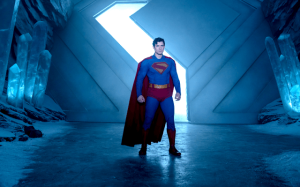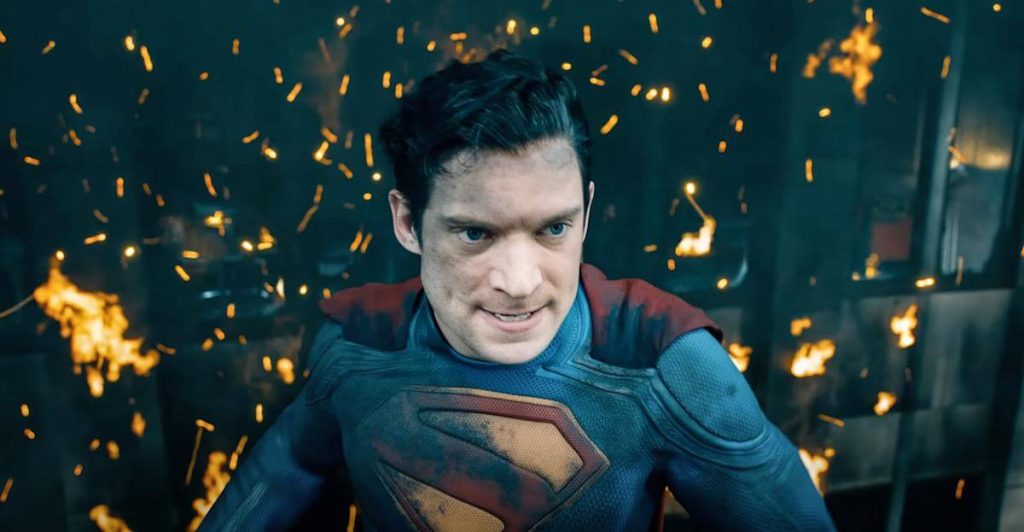world news
Superman’s Second-Week Surge: How James Gunn’s Vision Reshaped the Box Office in 2025
A Strong Second Wind: $57.2 Million Weekend Domination
In a summer dominated by blockbuster contenders, James Gunn’s Superman has proven its staying power. In its second weekend, the film grossed a formidable $57.2 million domestically, maintaining its position as the No. 1 movie in America. Despite a predictable 54% decline from its jaw-dropping $122 million opening, the superhero epic has shown remarkable resilience in a market where most high-budget franchises fizzle out after the debut. While several major releases—including a Smurfs reboot and a fresh adaptation of I Know What You Did Last Summer—entered the fray, none could match the momentum of DC’s latest crown jewel.
The film’s ability to hold audience attention in its second frame is notable. Recent history hasn’t been kind to superhero sequels or reboots, many of which experience sharp drops as word-of-mouth cools. But Superman, through strong reviews, emotional storytelling, and strategic marketing, has bucked the trend. Social media has played a key role in keeping interest high, with fans praising the movie’s return to the optimism and heart that defined early superhero cinema. Families, long-time DC enthusiasts, and even casual moviegoers have flocked back to theaters, helping the film become a true summer box office anchor.
James Gunn’s creative direction deserves much of the credit. By grounding Superman in emotional realism while keeping the spectacle intact, Gunn has balanced nostalgia with innovation. The second-week performance confirms that Superman is not just another big-budget flick—it’s a film with legs. With its tone, cast, and compelling storytelling, Superman has reignited a once-dwindling franchise and reminded audiences why the Man of Steel remains one of the most iconic figures in cinema.

Box Office Milestones: Outpacing the Franchise Legacy
By the end of its second weekend, Superman had racked up an impressive $235 million domestically and $406.8 million worldwide. This puts the film well ahead of many of its DC predecessors. It has already overtaken the entire domestic haul of Zack Snyder’s Man of Steel ($210 million) and has left behind Superman Returns (2006), both critically and commercially. What’s even more compelling is its trajectory compared to other key DC properties. While it still trails behind The Dark Knight, which earned $313.7 million in its first two weeks, Superman is the first film in the post-Snyder era to recapture that level of momentum.
Analysts believe the film’s upward trend indicates potential for a $300 million domestic finish, provided it maintains steady attendance amid upcoming competition. Comparisons to Marvel are inevitable. Yet, Superman seems to be doing what many recent Marvel entries haven’t: building organic buzz that drives return visits. The diversity of the audience is also noteworthy—multi-generational fans, new viewers, and international audiences have found common ground in this version of Clark Kent’s journey.
What separates Superman from its predecessors is not just its financial success, but its re-establishment of trust in the brand. For years, the DC Extended Universe (DCEU) suffered from inconsistent tone, underwhelming box office returns, and fan division. James Gunn’s direction marks a definitive new chapter—one that is cohesive, character-driven, and globally appealing. Warner Bros. and DC Studios have not only scored a hit but also a foundation upon which to build future stories. With a new universe emerging under Gunn’s stewardship, Superman is the rallying cry of a revitalized franchise.
The Global Picture: Overseas Reception and Reach
Though the film is dominating domestically, Superman’s international box office—currently $171.8 million—offers a more nuanced picture. Markets such as the UK ($22 million), Mexico ($16.6 million), and Brazil ($11.2 million) have shown strong performance. However, international holds dipped by roughly 47% in the second weekend, a steeper drop than in the U.S. Though still respectable, the overseas decline indicates that while the film resonates with global audiences, it may not reach the same heights internationally as it will at home.
This disparity highlights a recurring challenge in blockbuster filmmaking—global appeal. While James Gunn’s emotionally grounded storytelling strikes a chord in the West, some international audiences may gravitate more toward high-concept action or fantasy than character-driven superhero narratives. That said, strong reviews and a positive audience reception in major territories suggest the film has room to grow. With promotional efforts set to continue in key markets like Asia and Europe, the international tally is expected to cross $250 million in the coming weeks.
The international box office remains crucial to Superman’s long-term profitability. Hollywood studios increasingly rely on overseas markets to push films past the $500 million or $1 billion threshold. For Superman, the goal is likely a global total in the $600–700 million range—ambitious, but attainable with continued momentum. As word-of-mouth expands and digital rollouts begin in select countries, a second wave of international growth could help elevate the film into global blockbuster territory. Regardless of the final tally, the performance thus far has solidified Superman’s relevance on the world stage.

Industry Impact: Reshaping the Superhero Narrative
Superman is doing more than just selling tickets—it’s reshaping how studios think about superhero films in 2025. The genre, once seen as an unstoppable force, has suffered fatigue in recent years. Films such as The Marvels, Shazam! Fury of the Gods, and Ant-Man and the Wasp: Quantumania all underperformed, leading some to question whether audiences had moved on from capes and crusaders. But Superman suggests otherwise. Rather than signaling genre decline, those failures may have reflected poor storytelling and brand mismanagement more than audience fatigue.
Critics and industry insiders alike have praised Gunn for breaking the mold. Instead of relying on cameos and convoluted timelines, Superman focuses on a singular narrative with emotional stakes. The casting of a younger Clark Kent, the exploration of identity and responsibility, and the absence of excessive multiverse tropes have all contributed to a more grounded, universally accessible story. This fresh approach is being held up as a model for what superhero cinema can look like moving forward—personal, polished, and powerful.
Studios are taking note. Marvel, set to debut Fantastic Four: First Steps later this month, faces increased pressure to match Superman’s critical and commercial success. Meanwhile, Warner Bros. has greenlit follow-ups including Supergirl: Woman of Tomorrow and Clayface, hoping to ride the wave. For fans, this success also brings hope: a return to superhero storytelling that respects both the character and the audience. Superman is more than a film—it’s a roadmap for the genre’s survival and evolution.
Superman Its Not An S On My World, It Means Hope Air Jordan 1 High Top
What Lies Ahead: A Future Forged in Hope
With Superman dominating headlines and ticket sales, the focus now shifts to sustainability. Will the film have the stamina to carry DC through the remainder of 2025? More importantly, can it lay the groundwork for a coherent and compelling cinematic universe? Early signs suggest yes. Gunn and co-head Peter Safran have been tight-lipped about sequels, but strong box office returns make a follow-up all but guaranteed. Casting continuity, narrative cohesion, and character-driven arcs will be essential to maintaining this momentum.
The next immediate challenge is the release of Marvel’s Fantastic Four reboot. Set for July 25, it will provide the first real test of Superman’s staying power. If the film can maintain its top position or drop only slightly, it will be a signal of real audience loyalty. DC fans are cautiously optimistic, buoyed by the fact that Gunn’s storytelling feels built to last. With spin-offs and new characters on the horizon, the post-Superman DC Universe appears more promising than ever.
Beyond the box office, Superman has reignited the cultural conversation. From think pieces about its return to classic heroism to debates about its influence on future comic book films, the movie has touched a nerve. Its success proves that even in a saturated market, good storytelling, strong direction, and character authenticity still matter. As the Man of Steel continues to fly higher, he brings with him a message long overdue in superhero cinema: hope is back—and it’s here to stay.
From pegasusapparelus

